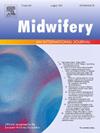胎次作为妊娠相关腰背痛和盆腔疼痛的功能限制和病假的预测因子:丹麦横断面研究。
IF 2.5
3区 医学
Q1 NURSING
引用次数: 0
摘要
背景:据报道胎次是妊娠相关腰背部和骨盆带疼痛(LBPP)的危险因素,但证据通常是基于妊娠后期或产后的回顾性自我报告数据。很少知道平价是否影响疼痛严重程度一旦LBPP存在,以及它如何影响日常功能和工作参与。目的:比较妊娠中期和晚期临床证实的LBPP的未产和产参与者,重点关注疼痛严重程度,功能限制和病假。方法:采用横断面设计,222名患有LBPP的孕妇在妊娠18周和28周完成常规产前咨询问卷。疼痛以6个数值评分量表(0-10)进行评估,并对10项日常活动进行功能限制。通过临床检查验证疼痛诊断。拟合具有稳健标准误差的线性和有序回归模型,调整年龄、工作要求和既往疼痛。使用错误发现率(FDR)校正控制多重性。研究结果:分娩妇女在咨询过程中报告了更高的疼痛评分,但在FDR矫正后差异很小且不显著。相反,在要求更高的日常活动中,尤其是在怀孕后期,她们一直报告有更大的功能限制。怀孕的参与者也更有可能请病假。在调整协变量后,这种关联仍然稳固。结论:在临床定义为LBPP的女性中,胎次不是疼痛严重程度的有力预测因子,但与更大的功能限制和病假有关。这些发现表明,平价可能与LBPP的后果特别相关。本文章由计算机程序翻译,如有差异,请以英文原文为准。
Parity as a predictor of functional limitations and sick leave in pregnancy-related low back and pelvic pain: A Danish cross-sectional study
Background
Parity has been reported as a risk factor for pregnancy-related low back and pelvic girdle pain (LBPP), but evidence is often based on retrospective self-report data from late pregnancy or the postpartum period. Less is known about whether parity influences pain severity once LBPP is present, and how it affects daily functioning and work participation.
Aim
To compare nulliparous and parous participants with clinically validated LBPP at mid- and later pregnancy, focusing on pain severity, functional limitations, and sick leave.
Methods
In a cross-sectional design, 222 pregnant women with LBPP completed questionnaires at routine antenatal consultations in gestational weeks 18 and 28. Pain was assessed on six numerical rating scales (0–10), and functional limitations on ten daily activities. Pain diagnoses were validated through clinical examination. Linear and ordinal regression models with robust standard errors were fitted, adjusting for age, job demands, and prior pain. Multiplicity was controlled using false discovery rate (FDR) correction.
Findings
Parous women reported higher pain scores across consultations, however differences were small and non-significant after FDR correction. In contrast, they consistently reported greater functional limitations in more demanding daily activities, particularly later in pregnancy. Parous participants were also substantially more likely to be on sick leave. This association remained robust after adjustment for covariates.
Conclusions
Among women with clinically defined LBPP, parity was not a strong predictor of pain severity but was associated with greater functional limitations and sick leave. These findings suggest that parity may be particularly relevant for the consequences of LBPP.
求助全文
通过发布文献求助,成功后即可免费获取论文全文。
去求助
来源期刊

Midwifery
医学-护理
CiteScore
4.50
自引率
7.40%
发文量
221
审稿时长
13.4 weeks
期刊介绍:
Midwifery publishes the latest peer reviewed international research to inform the safety, quality, outcomes and experiences of pregnancy, birth and maternity care for childbearing women, their babies and families. The journal’s publications support midwives and maternity care providers to explore and develop their knowledge, skills and attitudes informed by best available evidence.
Midwifery provides an international, interdisciplinary forum for the publication, dissemination and discussion of advances in evidence, controversies and current research, and promotes continuing education through publication of systematic and other scholarly reviews and updates. Midwifery articles cover the cultural, clinical, psycho-social, sociological, epidemiological, education, managerial, workforce, organizational and technological areas of practice in preconception, maternal and infant care.
The journal welcomes the highest quality scholarly research that employs rigorous methodology. Midwifery is a leading international journal in midwifery and maternal health with a current impact factor of 1.861 (© Thomson Reuters Journal Citation Reports 2016) and employs a double-blind peer review process.
 求助内容:
求助内容: 应助结果提醒方式:
应助结果提醒方式:


